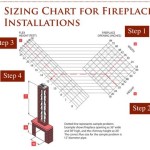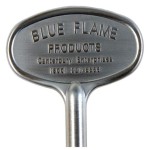```html
Energy Efficient Fireplace Heaters: A Comprehensive Guide
Fireplace heaters offer a blend of aesthetic appeal and supplemental heating, making them a popular choice for homes seeking a cozy and efficient heating solution. However, traditional fireplaces are notoriously inefficient, with much of the heat escaping up the chimney. Energy-efficient fireplace heaters address this issue by incorporating technologies that maximize heat output and minimize energy waste. This article explores the various types of energy-efficient fireplace heaters, their key features, and factors to consider when selecting the right option for specific needs.
Understanding Energy Efficiency in Fireplace Heaters
The energy efficiency of a fireplace heater is determined by how effectively it converts fuel into usable heat. This is typically measured using an efficiency rating, which represents the percentage of fuel energy that is transformed into heat directed into the room. Traditional open fireplaces often have efficiency ratings as low as 10%, meaning that 90% of the heat is lost. Energy-efficient models, on the other hand, can achieve efficiency ratings of 70% or higher, significantly reducing energy consumption and heating costs.
Several factors contribute to the energy efficiency of a fireplace heater. These include the design of the firebox, the type of fuel used, and the presence of features like airtight seals and advanced combustion systems. Proper installation and maintenance are also crucial for ensuring optimal efficiency.
Furthermore, the overall heating efficiency should be considered in conjunction with the specific heating needs of the space. An oversized heater will cycle on and off frequently, leading to inconsistent temperatures and wasted energy. Conversely, an undersized heater will struggle to maintain a comfortable temperature, resulting in increased energy usage and potential discomfort.
Types of Energy-Efficient Fireplace Heaters
Several types of fireplace heaters are designed with energy efficiency in mind. These include gas fireplace inserts, electric fireplaces, wood-burning stoves with EPA certification, and pellet stoves. Each type offers distinct advantages and disadvantages in terms of efficiency, cost, and installation requirements.
Gas Fireplace Inserts
Gas fireplace inserts are designed to be installed within an existing fireplace opening. They typically operate on natural gas or propane and offer significantly higher efficiency compared to traditional wood-burning fireplaces. These inserts utilize sealed combustion systems that draw air from outside the house, eliminating drafts and improving combustion efficiency. Some models also feature modulating burners that adjust the heat output based on the room's temperature, further enhancing efficiency.
Gas fireplace inserts usually incorporate a fan to circulate heat throughout the room, distributing warmth more evenly. Electronic ignition systems eliminate the need for a pilot light, reducing gas consumption and energy waste. Many modern gas inserts also come with programmable thermostats, allowing homeowners to set specific temperature preferences and reduce energy usage during periods of inactivity.
Installation of a gas fireplace insert typically requires professional installation to ensure proper venting and gas line connections. Regular maintenance, including cleaning the burner and checking the venting system, is essential for maintaining optimal performance and safety.
Electric Fireplaces
Electric fireplaces do not burn fuel to generate heat; instead, they use electric heating elements to warm the air. While they may not offer the same aesthetic appeal as traditional fireplaces, electric fireplaces can be a highly energy-efficient heating option, particularly for supplemental heating in smaller spaces. Many electric fireplaces use LED technology for the flame display, consuming very little electricity.
Electric fireplaces are generally easy to install, requiring only a standard electrical outlet. They are also relatively maintenance-free, with no need for venting or fuel storage. Most models offer adjustable heat settings, allowing users to customize the heat output to their specific needs. Some electric fireplaces also feature timers and thermostats for automated operation.
The energy efficiency of an electric fireplace is typically measured by its wattage rating. Lower wattage models consume less electricity, while higher wattage models provide more heat. It's important to choose an electric fireplace that is appropriately sized for the room to be heated, avoiding excessive energy consumption or inadequate heating.
EPA-Certified Wood-Burning Stoves
Wood-burning stoves have evolved significantly in recent years, with many models now meeting stringent emission standards set by the Environmental Protection Agency (EPA). EPA-certified wood stoves utilize advanced combustion technologies to burn wood more efficiently and reduce harmful emissions. These stoves often feature airtight fireboxes, catalytic combustors, or secondary combustion systems that improve combustion efficiency and reduce creosote buildup in the chimney.
The efficiency of a wood-burning stove is influenced by factors such as the type of wood used, the moisture content of the wood, and the stove's design. Dry, seasoned hardwood burns more efficiently than green or softwood. Proper ventilation and regular chimney cleaning are also crucial for maintaining optimal performance and preventing chimney fires.
When selecting a wood-burning stove, it's important to consider the size of the space to be heated and the stove's heat output capacity. Overfiring a stove can lead to damage and increased emissions, while underfiring can result in inefficient combustion and creosote buildup.
Pellet Stoves
Pellet stoves burn compressed wood pellets made from recycled wood waste. These stoves offer a convenient and relatively clean-burning alternative to traditional wood-burning fireplaces. Pellet stoves typically feature automatic ignition, adjustable heat settings, and programmable thermostats, allowing for precise temperature control and energy savings.
Pellet stoves operate by feeding pellets from a hopper into a burn pot, where they are ignited by an electric igniter. A fan circulates air through the burn pot, distributing heat throughout the room. The combustion process is highly efficient, with many pellet stoves achieving efficiency ratings of 75% or higher.
Pellet stoves require regular maintenance, including cleaning the burn pot, ash pan, and venting system. The hopper needs to be refilled with pellets periodically, depending on the stove's usage and the size of the hopper. The cost of wood pellets can vary depending on location and availability.
Factors to Consider When Choosing an Energy-Efficient Fireplace Heater
Selecting the right energy-efficient fireplace heater requires careful consideration of several factors, including heating needs, budget, installation requirements, fuel availability, and aesthetic preferences. Evaluating these factors will help homeowners choose the most suitable option for their specific circumstances.
The first step is to determine the heating needs of the space. Consider the size of the room to be heated, the insulation levels, and the climate. A larger, poorly insulated room in a cold climate will require a more powerful heater than a smaller, well-insulated room in a mild climate.
Budget is another important consideration. The initial cost of the fireplace heater, as well as the ongoing cost of fuel and maintenance, should be factored into the decision-making process. Gas fireplace inserts and pellet stoves tend to have higher upfront costs compared to electric fireplaces, but they may offer lower operating costs depending on fuel prices.
Installation requirements should also be taken into account. Some fireplace heaters, such as gas fireplace inserts and wood-burning stoves, require professional installation due to the need for venting and fuel line connections. Electric fireplaces, on the other hand, are generally easy to install and require only a standard electrical outlet.
Fuel availability is another factor to consider. Gas fireplace inserts require a natural gas or propane connection, while wood-burning stoves require a readily available supply of wood. Pellet stoves require wood pellets, which may not be readily available in all areas. Electric fireplaces do not require any fuel storage or delivery.
Finally, aesthetic preferences should be taken into account. Fireplace heaters come in a variety of styles and finishes, allowing homeowners to choose an option that complements their home décor. Consider the overall look and feel of the room and select a fireplace heater that enhances the aesthetic appeal.
```
Lifeplus Small Electric Fireplace Heater Tabletop 13 5 Energy Efficient Indoor Space Portable Wood Cabinet 3d Flame For Home Decor Com

Comfort Glow Electric Quartz Mobile Fireplace Indoor Heater With 3 Energy Efficient Heating Elements White Target

Lifeplus Small Electric Fireplace Heater Tabletop 13 5 Energy Efficient Indoor Space Portable Wood Cabinet 3d Flame For Home Decor Com

Eco Friendly Hearth Embrace Efficiency With Electric Fireplace Arttoreal

The Best Electric Fireplaces In 2024 Popular Science

Lifeplus Small Electric Fireplace Heater Tabletop 13 5 Energy Efficient Indoor Space Portable Wood Cabinet 3d Flame For Home Decor Com

Are Electric Fireplaces Energy Efficient We Love Fire

23 Electric Fireplace Insert Recessed Heater Bestoutdor

Boyel Living 50 In Recessed Ultra Thin Wall Mounted Heater Electric Fireplace Black Wf Ep24705 The Home Depot
The 6 Best Electric Fireplace Heaters Of 2024








